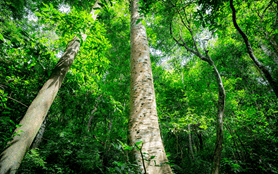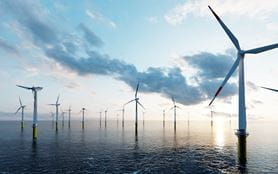Nine key takeaways from the UAE's new Hydrogen Strategy
Related people




Joe Clinton
Partner
Dubai

Judith Kim
Partner
Dubai

Kyle Nevin
Partner
Dubai

Elliott Sawford
Partner
Abu Dhabi

Sachin Karia
Partner
Dubai

Mike Campbell
Senior Associate
Dubai

Christine Yassa
Senior Associate
Abu Dhabi

Richard Chamberlain
Senior Associate
Dubai

Thomas Bramah
Senior Associate
Dubai

Ciara Hickey
Senior Associate
Dubai
Headlines in this article
Related news and insights
Publications: 09 January 2024
Projects, energy and infrastructure in the GCC – What does 2024 have in store?
News: 01 June 2023
A&O advises the underwriters on the IPO and listing of ADNOC Logistics & Services plc on the ADX
News: 26 May 2023
The UAE published its long-awaited hydrogen strategy last week, aiming to outline the key steps needed to position the UAE as a top global producer of low carbon hydrogen by 2031 and to support the UAE’s announced target of net zero by 2050. Dubai-based Senior Associates Mike Campbell and Christine Yassa set out nine key points to note.
1. Targets have been set:1.4mtpa low carbon hydrogen by 2031 and 15mtpa by 2050
By 2031, the aim is to have 0.5mtpa of green h2 produced in the UAE, 0.5mtpa of green h2 produced abroad, 0.4mtpa of blue h2 and 0.0075mtpa of pink (nuclear) hydrogen.
The ambition is to be a 'top global producer of low carbon hydrogen by 2031' and the production targets were derived by benchmarking against other countries' ambitions, announced projects and the predicted growth of the low carbon hydrogen market. The ambition to be a 'top global producer' is what is important and the targets could be revised upwards in time:
- Between them, ADNOC, TAQA, Masdar and Mubadala are already targeting production capacity of 1.4mtpa by 2031.
- Domestic demand is forecast to reach 2.1mtpa (with an additional 0.6mtpa of forecast export potential) by 2031 - so there is scope to accelerate production before then.
2. Focus is clean hydrogen - so all shades welcome
The plan refers to green (both light and dark), blue (using CCS), turquoise and pink (using 50MW generated by Barakah nuclear power plant). A certain amount of green h2 will also be produced abroad under the strategy.
3. Domestic demand prioritised
The primary role of the UAE's hydrogen production will be to support decarbonisation of domestic industry while the global export market develops. The UAE already has significant domestic industry in hard to abate sectors where hydrogen can help lower carbon footprints (including iron and steel, chemicals and fertilisers, aluminium, refining, shipping and aviation) – the hope is focusing on domestic supply will allow rapid development of a hydrogen industry without relying on other countries generating a market for export. This domestic market demand could grow 5x between 2031 and 2050 (from 2.1mtpa to 10.1mtpa). The initial focus is on finding incentives for steel, aluminium, cement and heavy goods vehicles (with sustainable aviation fuel and ancillary grid services to follow in 2026 to 2028).
4. UAE's national champions are critical to the strategy
The strategy was prepared with support from a number of the UAE's big state-owned champions: TAQA, ADNOC, Masdar, Mubadala, EGA, Emirates Steel, Etihad Rail and others. Many of these entities will also assist in the further development of policy frameworks, with senior representation on the Hydrogen Strategy Advisory Council (advising the Federal Hydrogen Committee) and on Working Groups responsible for different policy areas. They will also be responsible for a large amount of production and adaptation projects.
5. Hydrogen oases to be developed
As in other countries, the UAE will encourage the development of clusters (known in the UAE as 'oases') where production and end-use applications can be co-located to help the full supply chain develop and to accelerate industry adoption of hydrogen-based energy transition solutions. These will likely be located near depleted oil wells for CCS and potential connections to salt caverns for high volume hydrogen storage (as well as to pipeline infrastructure for distribution). The target is to have two hydrogen oases developed by 2031 (most likely Ruwais and KIZAD) and five by 2050. Oases will be isolated from the broader electricity system - micro-systems will help avoid grid management problems.
6. Export story important too
By 2050, the UAE could be exporting between 4.8 and 9.6mtpa. Initially exports are expected to be derivatives and green products (ammonia, synthetic fuels and green steel for example) but a hydrogen export industry will also emerge in time as technologies and markets develop.
7. Incentives to be announced – on both supply and demand side
The strategy contemplates a number of different types of incentive to stimulate development of the hydrogen production industry, including references to carbon pricing mechanisms and a potential cap and trade system on the demand side. On the supply side, it refers to cost support to reduce the LCOH of hydrogen production projects in the UAE (with precise form TBD but perhaps including electricity, technology, land and/or offtake support) and also to revenue support guarantees, with an ultimate aim of providing low-interest sustainable financing options for h2 projects. The strategy also indicates an aim of providing certainty for hydrogen oasis customers by setting a market price for clean hydrogen between 2026 and 2028.
8. Governance framework set
The strategy describes overall governance for the UAE's hydrogen model, with the Federal Hydrogen Committee (chaired by the Undersecretary of the Ministry of Energy and Infrastructure and attended by a number of other undersecretaries from other responsible ministries) responsible for regulatory and financial and non-financial stimuluses, a Hydrogen Strategy Advisory Council of stakeholders outside government, various working groups to drive policy and the Ministry of Energy and Infrastructure playing a coordinating role. A Hydrogen Support Committee (led by the Abu Dhabi Department of Economic Development) will also facilitate permitting, regulatory, economic and financial support for specific projects on a case-by-case basis.
9. Watch this space
While the strategy provides further clarity on the UAE's direction of travel, there is a lot of detail to come, including further technical codes and standards, definitions and thresholds for 'low carbon' hydrogen, a guarantee of origin certification scheme and more detail on incentive schemes.



